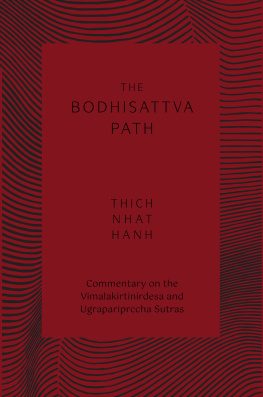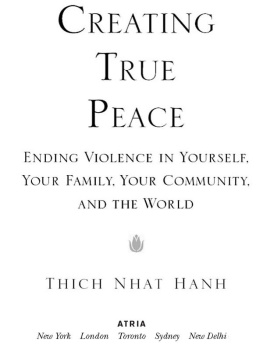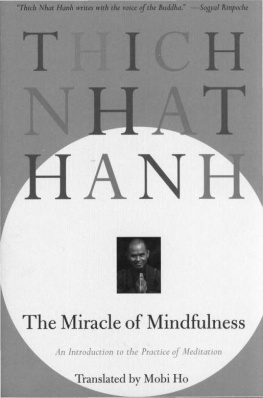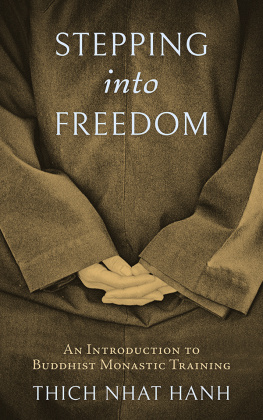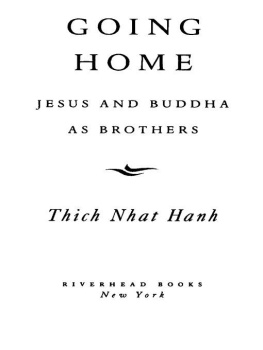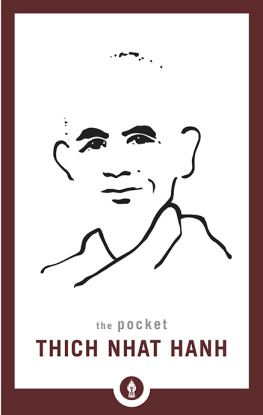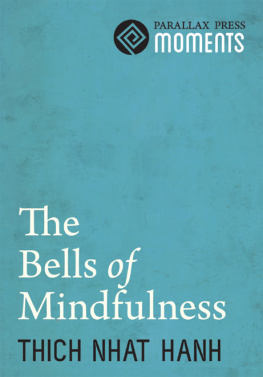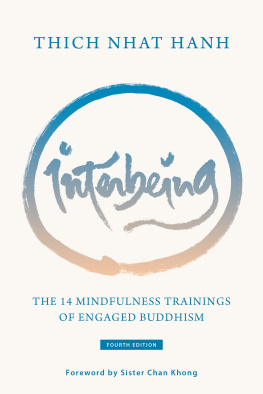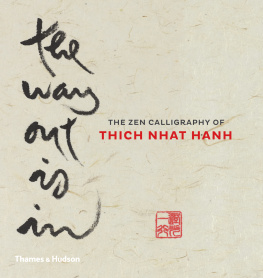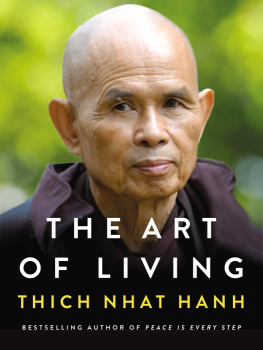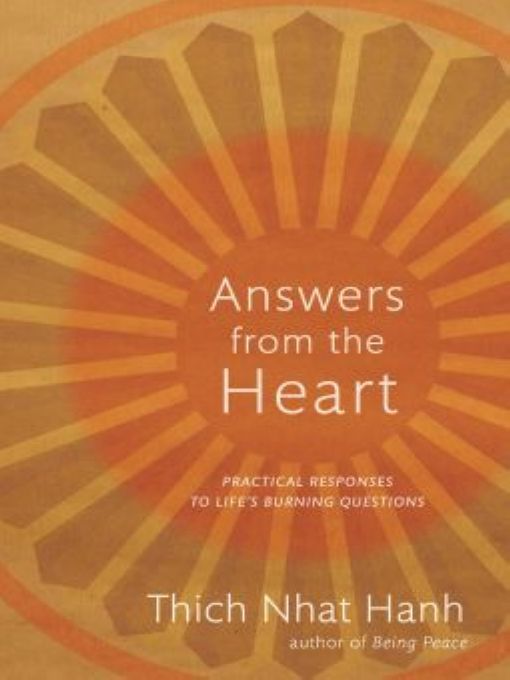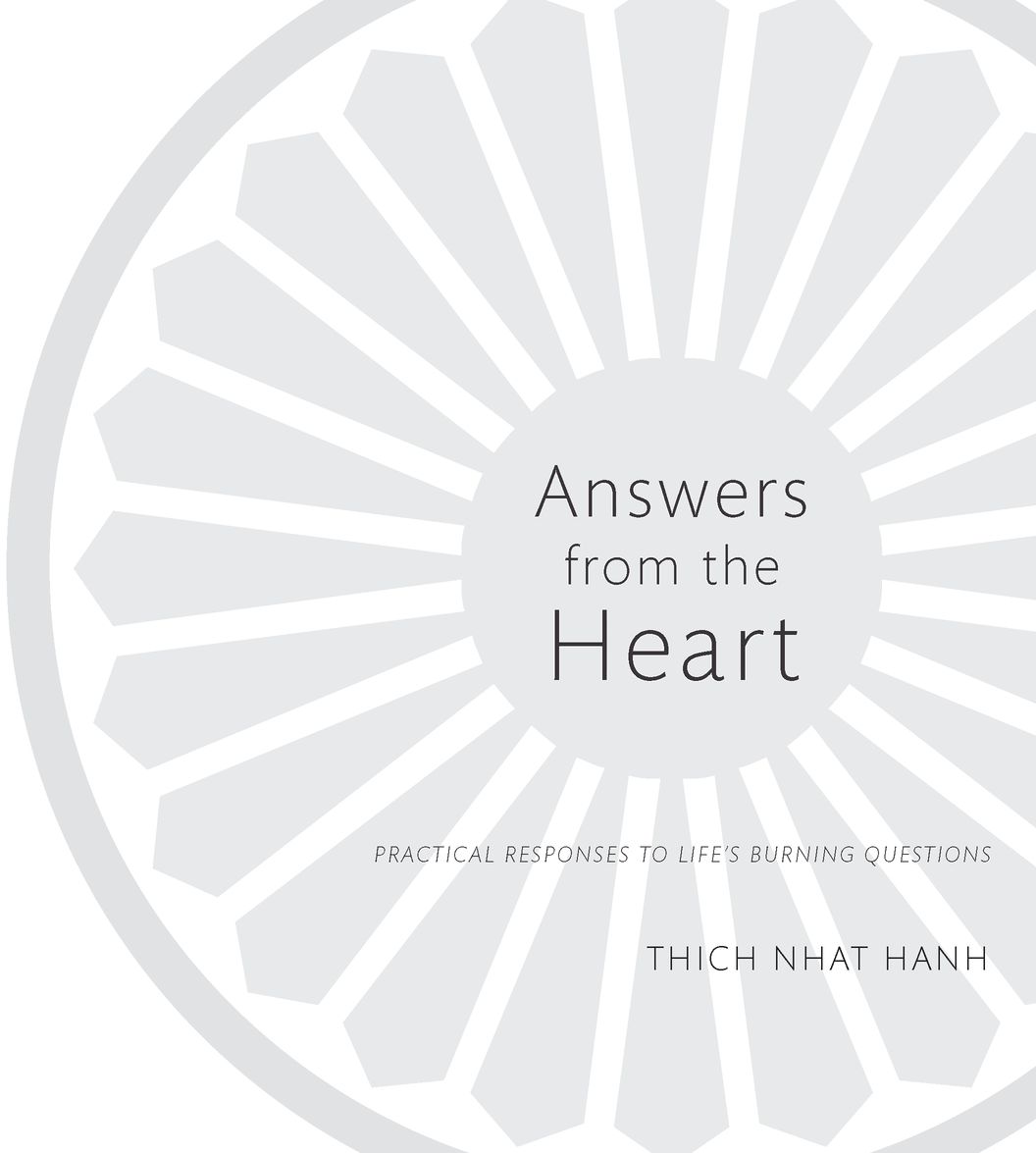Table of Contents
Introduction
When you first encounter mindfulness practice, you may have a million questions. But before you look to someone else for answers, sit with these questions yourself. You may discover, with surprise, that through looking deeply and touching deeply, you can answer most of the questions by yourself.
We have the habit of always looking outside of ourselves, thinking we can get wisdom and compassion from another person or the Buddha or his teachings (Dharma) or our community (Sangha). But you are the Buddha, you are the Dharma, you are the Sangha.
The goal of this book is not to teach you about Buddhism. Storing up knowledge about Buddhism will not answer your burning questions. We have to learn the things that can help us to transform our own suffering, our own caught situations. If our teacher is a real teacher, then his or her words are there to help us be in touch with life and to untie the preconceptions, views, anger, and habit energies we have. The aim of a real teacher is to help his or her students transform.
Dont underestimate the power of a good question. A good question can benefit many people. We should ask a question from our heart, a question that has to do with our happiness, suffering, transformation, and practice. A good question does not need to be very long.
There was a famous Zen teacher in ninth century China, Master Linji. He was well-known for his Zen Battles between teacher and student. A student would stand up to ask a question of the master, to find out if his own understanding was ripe. Linji used the expression coming out onto the battlefield; sometimes the student was victorious and sometimes he was defeated. When people asked me the questions in this book, they didnt have to come out onto the battlefield. In battle there is someone who wins and someone who loses. Instead, I try to look at each question and questioner with compassion, as if I had asked the questions myself.
This doesnt mean that the answers will be what we are wanting to hear. Just as we have the tendency to run away from a shot or a dose of medicine, even if its good for us, we have the tendency to run away from answers that touch painful areas in our lives.
Sometimes Zen answers are like riddles, designed to stop the thinking process of the student. Thinking is not awakened understanding. Awakened understanding is quicker than lightning. Where there is reasoning, there is failure.
Sometimes the teacher has to respond by what Master Linji called removing the object. This means that when someone comes with a question, if the teacher were to spend a lot of time explaining this and that, it wouldnt help; the student might stay caught in thinking and views. Instead the teacher removes the question, which may very well be a false obstacle. I often remove the object in order to give the question back to the student.
I hope that in some of these questions and answers we can find the kind of healing that we deeply need. The teaching words of the Buddha are called the all-embracing sound. This means that the words have the nature of fullness, touching all kinds of human conditions. All-embracing sound also means that a teaching has the characteristic of being appropriate to the hearer; it can touch our real situation. Questions and answers are an opportunity to cultivate our capacity to listen with openness, receptivity, and stillness. Listening in this way, we will surely receive the medicine we need.
Chapter 1
Daily Life
Q. I don t know what to do with my life. Im pulled in many different directions, but I can never stick to any one thing. Im always unhappy and confused. What can help?
A. Sometimes we plant roses by using cuttings. Knowing that the branch has no roots, we put the cutting in moist soil. If we leave the branch for long enough in rich, damp soil, it will become stable and take root. You have the potential to become a beautiful rose bush, but you need some soil, and you need to stay in the soil long enough for your roots to grow strong.
Were used to seeing suffering as something negative. Let us learn to look at suffering as something positive. In the teaching of the Buddha, suffering is called a noble truth, and we can learn a lot from it. A human being should have the capacity to deal with both suffering and happiness. The two always go hand in hand; if theres no suffering, theres no happiness. We all have a natural tendency to avoid suffering, and thats not good for us. Without suffering we cant grow as human beings, we cant learn to become more understanding and compassionate. Thats why we have to learn to recognize suffering and embrace it. So long as you continue to try to run away from it, youll continue to suffer. Many people find themselves in the situation of being rootless. You need the proper environment, the right kind of soil, in which to take root. A Sangha, a loving community of brothers and sisters, will give you the right kind of support and youll be on your own very soon. It doesnt take long for a cutting to become a rose bush.
Q. I feel guilty when Im not occupied. Is it okay to do nothing?
A. In our society, were inclined to see doing nothing as something negative, even evil. But when we lose ourselves in activities, we diminish our quality of being. We do ourselves a disservice. Its important to preserve ourselves, to maintain our freshness and good humor, our joy and compassion. In Buddhism we cultivate aimlessness and in fact in Buddhist tradition the ideal person, an arhat or a bodhisattva, is a businessless personsomeone with nowhere
to go and nothing to do. People should learn how to just be there, doing nothing. Try to spend a day doing nothing; we call that a lazy day. Although for many of us who are used to running around from this to that, a lazy day is actually very hard work! Its not so easy to just be. If you can be happy, relaxed, and smiling when youre not doing something, youre quite strong. Doing nothing brings about quality of being, which is very important. So doing nothing is actually something. Please write that down and display it in your home: Doing nothing is something.
Q. My desire for achievement has led to much suffering. No matter what I do, it never feels like its enough. How can I make peace with myself?
A. The quality of your action depends on the quality of your being. Suppose youre eager to offer happiness, to make someone happy. Thats a good thing to do. But if youre not happy, then you cant do that. In order to make another person happy, you have to be happy yourself. So theres a link between doing and being. If you dont succeed in being, you cant succeed in doing. If you dont feel that youre on the right path, happiness isnt possible. This is true for everyone; if you dont know where youre going, you suffer. Its very important to realize your path and see your true way.
Happiness means feeling you are on the right path every moment. You dont need to arrive at the end of the path in order to be happy. The right path refers to the very concrete ways you live your life in every moment. In Buddhism, we speak of the Noble Eightfold Path: Right View, Right Thought, Right Speech, Right Action, Right Livelihood, Right Effort, Right Mindfulness, and Right Concentration. Its possible for us to live the Noble Eightfold Path every moment of our daily lives. That not only makes us happy, it makes people around us happy. If you practice the path, you become very pleasant, very fresh, and very compassionate.


